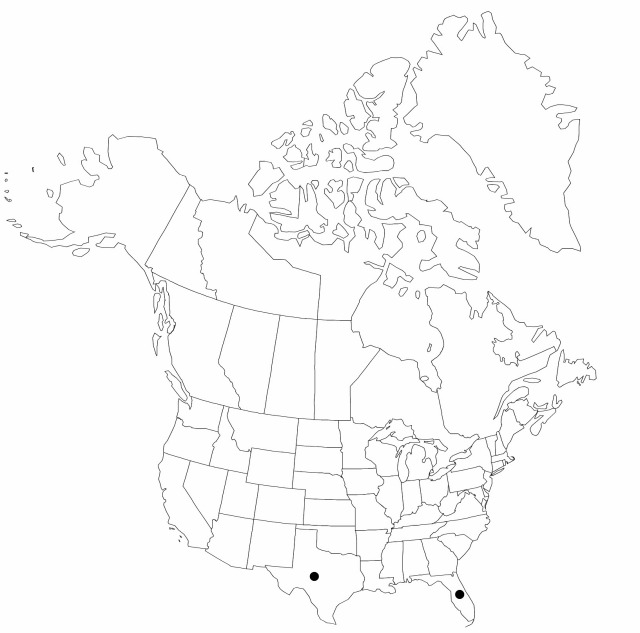Cyperus lentiginosus
Publ. Field Columbian Mus., Bot. Ser. 3: 74. 1903.
Herbs, perennial, cespitose, rhizomatous. Culms trigonous, (1–) 20–40(–75) cm × 1–1.5(–2.5) mm, glabrous. Leaves inversely W-shaped, 10–40(–70) cm × (1–)3–6(–10) mm. Inflorescences: spikes 1(–3), broadly and loosely ovoid to oblong-ellipsoid, (15–)20–30(–50) × 20–30(–45) mm; bracts (3–)5–7(–10), ascending at 30(–45)°, inversely W-shaped, 10–30(–50) cm × (1–)3–5(–11) mm; rays (2–)3–6(–12), (1–)3–10(–17) cm; rachilla deciduous, wings ca. 0.3 mm wide. Spikelets (10–)25–50(–100), ± terete, (appearing compressed due to excurved apices of floral scales), (8–)12–15(–24) × (0.8–)1.1–1.4(–1.8) mm; floral scales persistent, (4–)6–8(–14), golden brown, off-white to stramineous, densely red-glandular punctate, green medially, 3–4-ribbed laterally, 3–5-ribbed medially, oblong-lanceolate, (3.2–)4–4.5 × 1.2–1.6 mm, apex blunt, mucronulate to mucronate, mucro 0.2–0.5 mm; proximal scales mucronulate, distal scales mucronate; terminal scale conduplicate. Flowers: anthers 0.5–0.8(–1.4) mm; styles 0.8–1 mm; stigmas 1–2 mm. Achenes brown, ± sessile to stipitate, oblong-ellipsoid, 1.7–2 × 0.6–0.7 mm, 0.1(–0.2) × 0.2 mm, apex rounded, apiculate from dark purple style base, surfaces papillose.
Phenology: Fruiting spring–summer.
Habitat: Thickets, open woods
Elevation: 0–50 m
Distribution

Fla., Tex., Mexico, West Indies.
Discussion
Cyperus lentiginosus has been treated as a variety of C. tenuis (G. Kükenthal 1935–1936). The two taxa differ in the longer scales with cuspidate apices of C. lentiginosus, the inversely W-shaped leaves and bracts (those of C. tenuis are V-shaped), and the open spikes (those of C. tenuis are dense).
Selected References
None.
